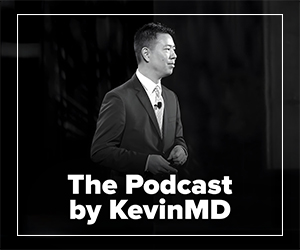As a board-certified internal medicine physician and hospitalist with over 12 years of experience, I find myself grappling with an unsettling thought: I cannot, in good conscience, encourage medical students with clinical ambitions to pursue any general medicine field.
This may seem like a harsh assessment, but in my opinion, the writing is on the wall for general physicians. While those of us already established in practice are likely to have a decade or more before our roles become obsolete, the future for those entering the field now appears increasingly uncertain.
An unsustainable job
After investing a decade to get their degree and complete residency, often taking on hundreds of thousands of dollars in student debt, physicians who enter general medicine fields will face a challenging job market that does not adequately compensate them for their sacrifice. Some may wonder: What was the point of becoming a general physician in the first place? Could we have still helped serve patients by instead becoming a nurse practitioner, physician assistant, CRNA, or some other health care professional instead?
Our desire to provide excellent patient care is constantly undermined by a system that prioritizes profits over patients. We grapple with endless administrative tasks, staffing shortages, and the ethical burden of caring for increasingly complex patients within a system plagued by bureaucracy. While financial gain was likely not the primary motivator for most of us entering medicine, it is disheartening to see reimbursement rates from Medicare constantly cut. There seems to be a fundamental disconnect between the value we provide and the compensation we receive. This unsustainable model forces physicians to compromise their own well-being for their work.
For physicians working for health care systems, some jobs have become so insufferable that they are searching for any form of escape. Do not believe me? Thousands of social media posts highlight desperate attempts to pivot to alternative careers such as health care consulting, pharma, informatics, utilization management, writing, medical education, expert witness work, or startup advising.
Societal perception of value
Society is becoming increasingly skeptical of the value general physicians provide. Despite risking our lives during a global pandemic, we are sometimes accused of being shills for Big Pharma—even though any payment or transfer of value from pharmaceutical manufacturers to U.S. physicians is publicly reported. Patients frequently bypass generalists, demanding immediate specialist referrals (frustrating our specialist colleagues themselves). Many patients also place more trust in health care influencers, naturopaths, and chiropractors, eagerly purchasing dubious treatments or supplements rather than following evidence-based medical advice.
Employment trends
The U.S. Bureau of Labor Statistics projects a 45 percent growth in NP employment from 2022 to 2032 (vs. 4 percent for physicians). In an effort to cut costs, health care institutions have clearly been shifting toward a workforce that relies heavily on non-physician practitioners (NPPs). Legislators clearly support this substitution, with more than 25 states allowing nurse practitioners independent practice authority. It is not just NPs and PAs—other health care professionals continue to push for expanded scope of practice; we can observe the lobbying and efforts of those with doctorate-level degrees proclaiming their ability to manage chronic disease or help with our national health care crisis.
It is not just outpatient medicine. At some academic centers where I have worked, NPs and PAs actually make up a large part of the hospitalist department. I have also seen open ICUs previously staffed by internal medicine hospitalists entirely staffed by NPPs during the evening. This trend of NPPs replacing physicians is only going to accelerate since health care systems and employers will do whatever they can get away with. Non-physician practitioners are actually ubiquitous across all specialties—they are often the first to evaluate patients when I call a consultant, while their supervising physicians are busy in the endoscopy or fluoroscopy suite or in operating rooms.
The threat of AI
Sure, today’s AI models have their quirks, but things are changing fast. AI will disrupt certain medical specialties in ways we can barely imagine. Let us take hospital medicine, for example (and do not worry, I will leave the radiologists and pathologists alone for now). While I am stuck in a 30-minute family meeting or multidisciplinary rounds, I might receive two to five secure messages or pages related to chest pain, vital signs, or some other clinical development. If the patient is sick enough and I do not respond, a rapid response is usually called by the nurse. If it is not, then I am already behind the eight ball in helping my patient by ordering new labs, diagnostic testing, or medication.
I predict that in the very near future, the rudimentary sepsis alerts or reminders in today’s electronic medical records will soon evolve into cascades of automated orders. I can envision algorithms mobilizing phlebotomy teams to draw blood, hospital pharmacists to dispense medications, and nurses to administer treatments and closely monitor patients—all without my intervention as a hospitalist. Specialists such as those in infectious disease, cardiology, and critical care will magically step in as needed because they will be consulted based on protocols. The role of the general physician as the coordinator of care may become obsolete, potentially replaced by non-physician practitioners, if needed at all.
Conclusion
My advice to medical students is simple: To ensure career longevity, please focus on making yourself irreplaceable.
If you are drawn to a subspecialty or a procedure-based or surgical field that you can see yourself dedicating your life to, I highly encourage you to pursue that path.
However, if your true passion lies in general medicine and you want to be a clinician, I urge you to start planning your own practice now. Embrace innovation, entrepreneurship, and a patient-centered approach.
Learn from physician practice owners, observe how they regain autonomy by becoming their own bosses, and understand how the tax code benefits business owners over W-2 employees. Whether it is private practices that accept insurance, direct primary care models that opt out of traditional insurance, or concierge practices that blend membership fees with insurance, there are countless avenues for you to explore.
Varun Verma is an internal medicine physician.






















![Preventing physician burnout before it begins in med school [PODCAST]](https://kevinmd.com/wp-content/uploads/The-Podcast-by-KevinMD-WideScreen-3000-px-4-190x100.jpg)


